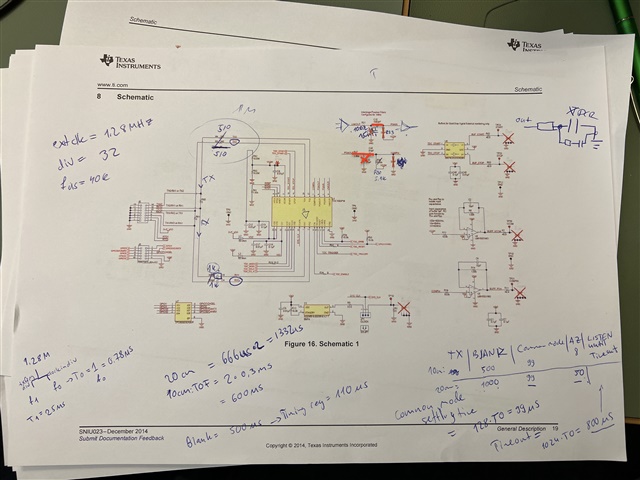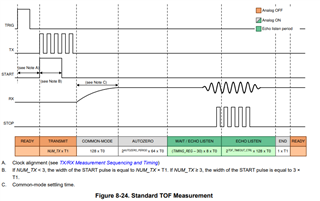Other Parts Discussed in Thread: TDC1000, PGA460
Hi!
I have a the TDC1000-C2000EVM and want to measure 10-20cm distances using a 40k CT10U-30S400-1 transducer rated at 10V and C=10nF.
I am using mode 0 of the TDC1000 with the settings in the screenshot below. Unfortunately I cannot get an echo and the TX signal rings and then is pulled up to some DC level it seems.
I have made the following mods on the EVM:
- Changed filter to include only an RC low pass with 100kHz cutoff (100R, 15nF)
- Changed to use external clock set at 1.28M --> 1.28M/32 = 40k
- Changed series resistors on TX path to 500R
- Replaced RX paths series capacitors to resistors of 1K. (for LNA gain of 9)
See images below:
The setup. Distance to box is never detected no matter what settings are used, tried bypassing the LNA, PGA, changing gains, timing. What am I missing? Does anything on the evalboard need to be changed? Is a simple low pass filter not enough and should I implement a bandpass?
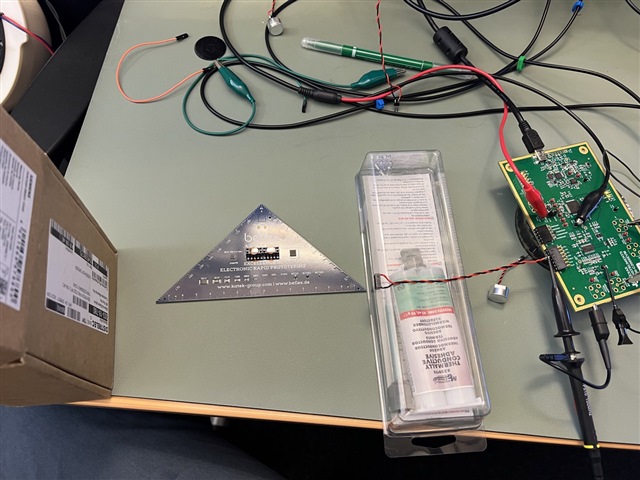
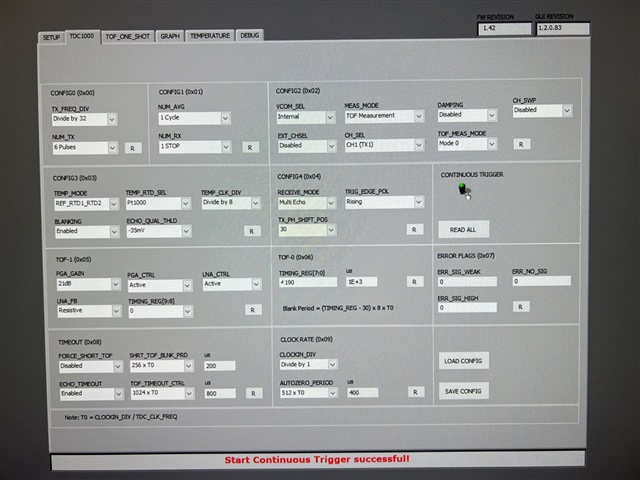
Using CT10U-30S400-1 . Yellow is the buffered COMPIn signal. on the EVM. Blue is directly on the TX output with transducer connected. Purple is start line.
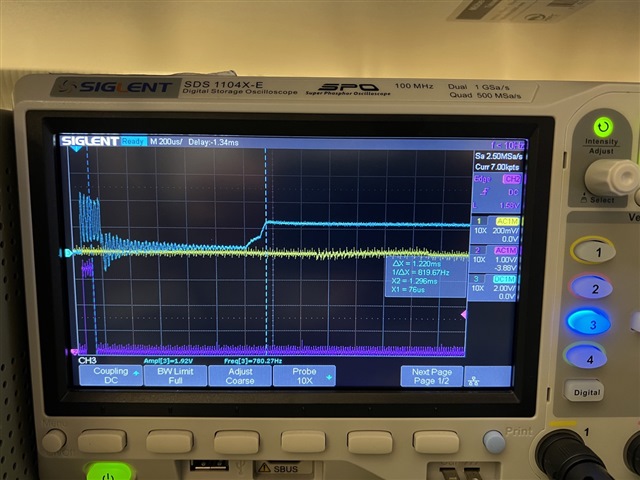
Using a different 40K transducer:
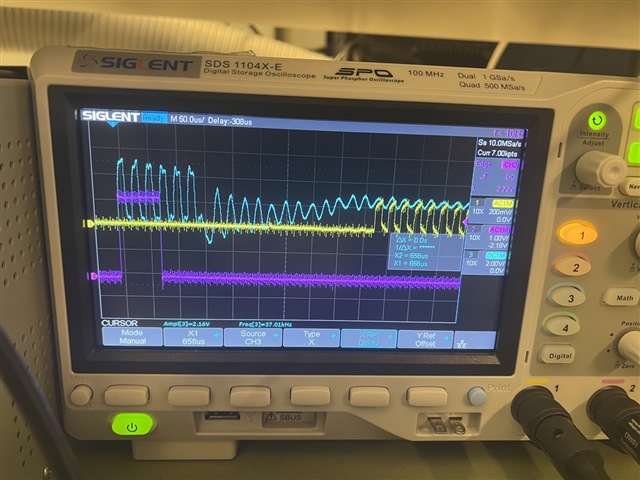
Changes made:


